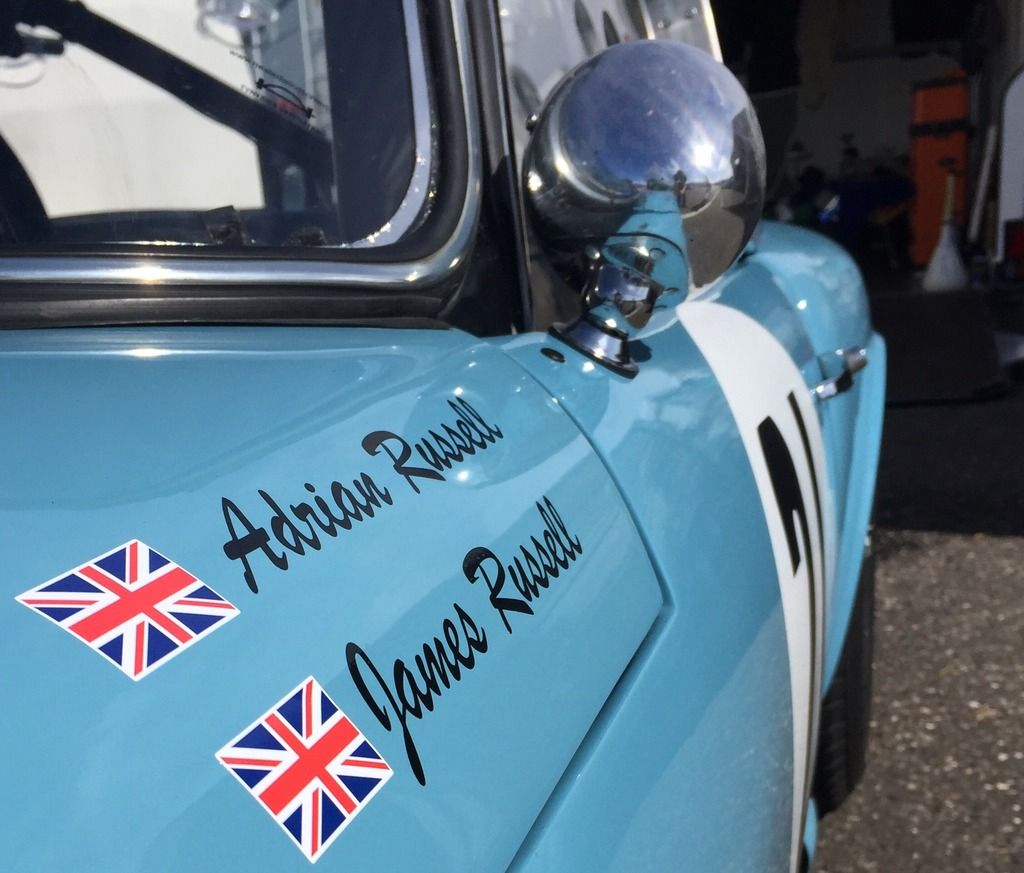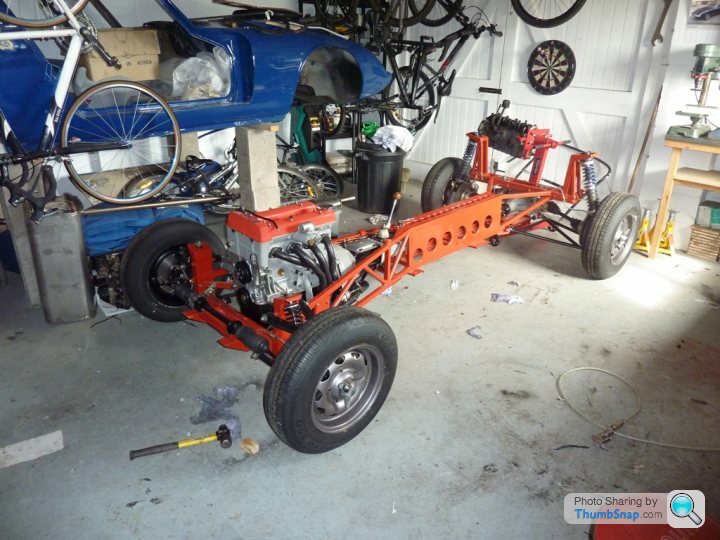What would a 2020 Lotus Elan +2 be like ?
Discussion
What form would a 2017 take on an Elan +2 sized car take, and would a small, light, agile 2+2 with stunning design & performance from a smaller volume manufacturer sell in commercial numbers ?
There are many specialist mid engined 2 seaters produced, yet I can't think of any "non-mainstream based" front-engined, usable, affordable, 2+2 coupes.
The BRZ/gt86's & M2 etc satisfy many, a new 911 is beyond most budgets, and the Evora back seats aren't usable for adults.
Any thoughts on what drivetrain, configuration, size would be most popular ?
There are many specialist mid engined 2 seaters produced, yet I can't think of any "non-mainstream based" front-engined, usable, affordable, 2+2 coupes.
The BRZ/gt86's & M2 etc satisfy many, a new 911 is beyond most budgets, and the Evora back seats aren't usable for adults.
Any thoughts on what drivetrain, configuration, size would be most popular ?
It would be twice the size and weight of the original. Its headlights would not pop up. Safety regulations.
It would feature a turbo which would dull its throttle response and deliver a flat and unexciting power delivery. Emissions.
Its wheels would be too big, its suspension too hard and its gearbox too automated due to misguided consumer preference. It'd be full of unnecessary technology because same.
The bodywork would be overdesigned and fussy in an attempt to disguise to bloated proportions.
Then nobody would buy it because although it's more interesting and handles better than it's competitors it is a bit too expensive, unavailable on lease and its reliability and residuals are unknown.

It would feature a turbo which would dull its throttle response and deliver a flat and unexciting power delivery. Emissions.
Its wheels would be too big, its suspension too hard and its gearbox too automated due to misguided consumer preference. It'd be full of unnecessary technology because same.
The bodywork would be overdesigned and fussy in an attempt to disguise to bloated proportions.
Then nobody would buy it because although it's more interesting and handles better than it's competitors it is a bit too expensive, unavailable on lease and its reliability and residuals are unknown.

Buzzfan said:
What form would a 2017 take on an Elan +2 sized car take, and would a small, light, agile 2+2 with stunning design & performance from a smaller volume manufacturer sell in commercial numbers ?
Mmmm, I can see it now. The Chinese aren't exactly renowned for their sportscars. You're far more likely to see a SsangYong Musso type vehicle with a Lotus badge. HustleRussell said:
It would be twice the size and weight of the original. Its headlights would not pop up. Safety regulations.
It would feature a turbo which would dull its throttle response and deliver a flat and unexciting power delivery. Emissions.
Its wheels would be too big, its suspension too hard and its gearbox too automated due to misguided consumer preference. It'd be full of unnecessary technology because same.
The bodywork would be overdesigned and fussy in an attempt to disguise to bloated proportions.
Then nobody would buy it because although it's more interesting and handles better than it's competitors it is a bit too expensive, unavailable on lease and its reliability and residuals are unknown.
Yup, that sounds about right.It would feature a turbo which would dull its throttle response and deliver a flat and unexciting power delivery. Emissions.
Its wheels would be too big, its suspension too hard and its gearbox too automated due to misguided consumer preference. It'd be full of unnecessary technology because same.
The bodywork would be overdesigned and fussy in an attempt to disguise to bloated proportions.
Then nobody would buy it because although it's more interesting and handles better than it's competitors it is a bit too expensive, unavailable on lease and its reliability and residuals are unknown.
Equus said:
HustleRussell said:
It would be twice the size and weight of the original. Its headlights would not pop up. Safety regulations.
It would feature a turbo which would dull its throttle response and deliver a flat and unexciting power delivery. Emissions.
Its wheels would be too big, its suspension too hard and its gearbox too automated due to misguided consumer preference. It'd be full of unnecessary technology because same.
The bodywork would be overdesigned and fussy in an attempt to disguise to bloated proportions.
Then nobody would buy it because although it's more interesting and handles better than it's competitors it is a bit too expensive, unavailable on lease and its reliability and residuals are unknown.
Yup, that sounds about right.It would feature a turbo which would dull its throttle response and deliver a flat and unexciting power delivery. Emissions.
Its wheels would be too big, its suspension too hard and its gearbox too automated due to misguided consumer preference. It'd be full of unnecessary technology because same.
The bodywork would be overdesigned and fussy in an attempt to disguise to bloated proportions.
Then nobody would buy it because although it's more interesting and handles better than it's competitors it is a bit too expensive, unavailable on lease and its reliability and residuals are unknown.
The only thing I'd add is that the develop team / budget size for the infotainment systems would be triple that of chassis set up, ride and handling...
rockin said:
Buzzfan said:
What form would a 2017 take on an Elan +2 sized car take, and would a small, light, agile 2+2 with stunning design & performance from a smaller volume manufacturer sell in commercial numbers ?
Mmmm, I can see it now. The Chinese aren't exactly renowned for their sportscars. You're far more likely to see a SsangYong Musso type vehicle with a Lotus badge. 
I for one look foward to are up and coming lotus branded buses.... would be the perfect tow vehicle for an Elise/Exige.

My first post was uncharacteristically pessimistic so I'm having another go.
If you copied the innovative 'I' shaped backbone chassis, perhaps with clever modern composite materials, and teamed that with a lightweight composite outer shell like the original, all of your customers would be killed in side impacts.
If you copied the innovative 'I' shaped backbone chassis, perhaps with clever modern composite materials, and teamed that with a lightweight composite outer shell like the original, all of your customers would be killed in side impacts.
HustleRussell said:
My first post was uncharacteristically pessimistic so I'm having another go.
If you copied the innovative 'I' shaped backbone chassis, perhaps with clever modern composite materials, and teamed that with a lightweight composite outer shell like the original, all of your customers would be killed in side impacts.
If you copied the innovative 'I' shaped backbone chassis, perhaps with clever modern composite materials, and teamed that with a lightweight composite outer shell like the original, all of your customers would be killed in side impacts.

suffolk009 said:
^^ Wasn't the main problem with the Zenos central spine (in itself a nice idea), that by the time you had added so many outriggers for side impact there was reduced advantage to the spine concept.
I am not a structural engineer but I've never understood how the backbone could be advantageous over more conventional designs, if you consider a car as a beam the backbone design has a much smaller radius of gyration so surely any advantage gained in weight will be lost trying to build in stiffness. First job building an Elan race car is getting the 26r chassis with extra stiffeners and then fitting a mahoosive cage into the body in an effort to make it slightly less of a death trap.
It’s hard to imagine the 2020 Lotus Elan would end up a million times different from a GT86/BRZ in terms of layout and proportion- to adequately accommodate 2+2 people while keeping the weight and footprint down while meeting modern safety expectations you are really bound to monocoque construction. Extruded and bonded aluminium a la the rest of the modern Lotus range is probably not spatially efficient enough and the backbone as discussed is not safe enough nor stiff enough considering the weight and spring rates the modern Elan 2+2 would require.
It would not be Chapmanesque to complicate things unnecessarily so an unfussy four cylinder engine would likely be employed- although if the engine were to go in the front and drive the rear wheels you’d imagine that he too would be attracted to the low CoG of a boxer engine if a shipping container full could be procured at a very favourable price.
Perhaps the way to take the 2+2 forward is to put the engine and drivetrain all at one end of the car. The MkII Lotus Elan was FWD. Maybe you put the engine in the back? That loses the transmission tunnel and narrows the car, reducing the frontal area. It also permits a more aerodynamic shape. Lotus were instrumental in the move to rear engine race cars after Cooper pioneered it.
Production volumes really preclude steel or alumiunium monocoque construction so it has to be composite of some description.
After all that I’m imagining something that looks kinda like a LWB Europa. Low bonnet, low roofline, engine on the back axle and breadvan back (why carry the back end on- unnecessary weight)
It would not be Chapmanesque to complicate things unnecessarily so an unfussy four cylinder engine would likely be employed- although if the engine were to go in the front and drive the rear wheels you’d imagine that he too would be attracted to the low CoG of a boxer engine if a shipping container full could be procured at a very favourable price.
Perhaps the way to take the 2+2 forward is to put the engine and drivetrain all at one end of the car. The MkII Lotus Elan was FWD. Maybe you put the engine in the back? That loses the transmission tunnel and narrows the car, reducing the frontal area. It also permits a more aerodynamic shape. Lotus were instrumental in the move to rear engine race cars after Cooper pioneered it.
Production volumes really preclude steel or alumiunium monocoque construction so it has to be composite of some description.
After all that I’m imagining something that looks kinda like a LWB Europa. Low bonnet, low roofline, engine on the back axle and breadvan back (why carry the back end on- unnecessary weight)
I read somewhere (years ago) that by the end of the Esprits run, the engineers wanted to stiffen the suspension, but couldn't because the chassis was providing more flex than the suspension. But then that may just be an old wives tale...
I think if the Toyota/BRZ was a Lotus with a Lotus badge it would be hailed as brilliant and more would be getting sold. As it is, it seems to be well thought of but largely overlooked and unloved. Worth mentioning also that good lease deals on them are pretty much non existant, and since that's how most people buy/rent their new cars that'll hit sales numbers.
I think if the Toyota/BRZ was a Lotus with a Lotus badge it would be hailed as brilliant and more would be getting sold. As it is, it seems to be well thought of but largely overlooked and unloved. Worth mentioning also that good lease deals on them are pretty much non existant, and since that's how most people buy/rent their new cars that'll hit sales numbers.
HustleRussell said:
I am not a structural engineer but I've never understood how the backbone could be advantageous over more conventional designs, if you consider a car as a beam the backbone design has a much smaller radius of gyration so surely any advantage gained in weight will be lost trying to build in stiffness.
The advantage is that the backbone can be made a relatively 'pure' structure, whereas anything with a larger second area moment inevitably has to have large openings in it to fit people and drivetrain components into it.Designed properly, the backbone structure is still capable of extremely good stiffness:weight figures, despite its small second area moment. The STP Indy car, 'Silent Sam' had a torsional stiffness of about 35,000 lb.ft/deg from 137lbs of structure weight, compared to circa 2,500lb.ft/deg from about 150lbs of structure weight for something like a Caterham Seven spaceframe... call it 15 times as good? Even the Elan is about twice as stiff as the Caterham, for about half the structure weight.
The reinforcement on the 26R chassis is there mainly to stop it fatigue cracking rather than to increase torsional stiffness. Similarly, while the roll cage certainly does increase stiffness, its main job is for secondary safety: if you only wanted to increase stiffness, there are structurally more efficient ways of doing it.
HustleRussell said:
Perhaps the way to take the 2+2 forward is to put the engine and drivetrain all at one end of the car.
Like the Evora, you mean? 
HustleRussell said:
Production volumes really preclude steel or alumiunium monocoque construction so it has to be composite of some description.
:cough: Evora :cough:Interesting stuff on the backbone, even if I still can't visualise how a section with such a centralised distribution can be so stiff compared to a Caterham chassis for instance.
Wasn't aware of silent sam so reading about that should keep me from working this afternoon.

Had no idea the Evora had rear seats. I am quite sure it doesn't have an aluminium monocoque though. The chassis is made of extruded sections and the bodywork is composite.
Wasn't aware of silent sam so reading about that should keep me from working this afternoon.
Equus said:
HustleRussell said:
Perhaps the way to take the 2+2 forward is to put the engine and drivetrain all at one end of the car.
Like the Evora, you mean? 
HustleRussell said:
Production volumes really preclude steel or alumiunium monocoque construction so it has to be composite of some description.
:cough: Evora :cough:HustleRussell said:
Had no idea the Evora had rear seats. I am quite sure it doesn't have an aluminium monocoque though. The chassis is made of extruded sections and the bodywork is composite.
I wouldn't necessarily disagree with you, but Lotus call it a monocoque, so you'd better take it up with them. 
There have been other aluminium-tubbed cars at low price point and limited volumes that are unequivocally monocoques (the Strathcarron SC5a, for a start) so I don't think you can rule it out as a construction technique, regardless: it's arguably cheaper than a composite monocoque, whatever.
HustleRussell said:
I think I'm correct in thinking that the clever people invented monocoque construction, or were at least the first to apply it in the automotive sphere
Not even close!They were the first to try on a Formula 1 car (the 25), and among the first to try a fibreglass monocoque (with the Type 14 Elite), but there had been lots of automotive monocoques before those, not least the Jaguar D-type, which everybody knows about.
The first true monocoque I'm aware of was Howard Blood's Cornelian, driven by Louis Chevrolet in the 1915 Indy 500, but there were others like the Voisin Laboratoire, the Killeen series of cars - even production cars like the Mini, if you accept modern Unibody construction as a form of monocoque.
Gassing Station | General Lotus Stuff | Top of Page | What's New | My Stuff




